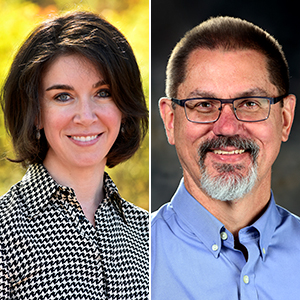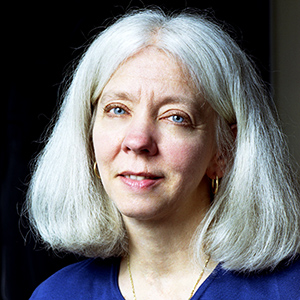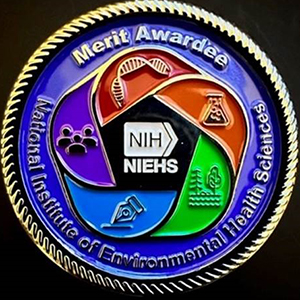Alison Motsinger-Reif, Ph.D., stepped up as the new Biostatistics and Computational Biology Branch (BCBB) chief Dec. 10. The native North Carolinian came from close by, at North Carolina State University, where she led a lab and also served as director of the Bioinformatics Consulting and Service Core and the Statistical Consulting Core.
New methods, important contributions
 Motsinger-Reif spoke of the similarities and differences in analyzing responses—both favorable and harmful—to chemotherapy drugs and to environmental exposures. (Photo courtesy of Food Sciences Leadership Institute)
Motsinger-Reif spoke of the similarities and differences in analyzing responses—both favorable and harmful—to chemotherapy drugs and to environmental exposures. (Photo courtesy of Food Sciences Leadership Institute)Motsinger-Reif explained her passion for a technique called association analysis. “I’m really interested in looking at large-scale genetics and genomics data to find genetic factors that predict complex disease, and responses to drugs and environmental chemicals.” To achieve this goal, she develops new analytical methods and applies them to real data.
“Dr. Motsinger-Reif brings a wealth of expertise in computational biology and biostatistics to NIEHS,” said NIEHS Scientific Director Darryl Zeldin, M.D. “She is an internationally-recognized statistical geneticist, with seminal contributions to the field in methods development and applications.”
He noted her strong history of both independent and collaborative research, which has resulted in an impressive number of publications in top tier journals. “Her work will help NIEHS effectively deal with some of the challenges related to big data and innovative data science approaches as outlined in our new strategic plan,” Zeldin said.
“I would also like to extend my personal thanks to Clarice Weinberg, Ph.D., for her service and commitment to NIEHS over the last year as acting BCBB Branch Chief. She has done an outstanding job,” he added.
The proverbial needle in a haystack
“We deal with data that has millions of variables in datasets that never have millions of samples,” said Motsinger-Reif of her research. “How do we think about narrowing down from millions to the few [variables] that predict response to a chemical or drug in sparse data?”
By looking at what methods exist to answer such questions, then determining what they do well and what questions they cannot answer, she and other computational scientists look for ways to extend existing methods or develop new ones.
For example, Motsinger-Reif has recently spent a lot of time thinking about response to cancer chemotherapies. “We use cell line models of drug response to look for genetic factors that predict who will respond,” she explained. “Being able to predict mechanisms of action can point to biomarkers. That helps us move toward personalized medicine as we better understand the biology of drug response.”
Other recent work analyzed responses to cancer chemotherapy and diabetes drugs. “There are lots of collaborations I’m looking forward to,” she said, naming such large studies as the Sister Study and the Agricultural Health Study, conducted by the NEIHS Epidemiology Branch.
Collaborators become colleagues
Working with NIEHS researchers is nothing new for Motsinger-Reif, who pointed to a 2016 collaboration with Stephanie London, Ph.D., head of the NIEHS Genetics, Environment, and Respiratory Disease Group. Along with other researchers, they studied babies whose mothers smoked during the pregnancy.
By using bioinformatics tools in new ways, the team identified biological pathways affected by the DNA methylation changes resulting from the exposure. These pathways may be involved in the known adverse health effects experienced by children of women who smoked while pregnant.
Another collaboration, this one with National Toxicology Program (NTP) researchers, was chosen by NTP as one of its 2015 Papers of the Year(https://factor.niehs.nih.gov/2016/1/feature/2015-papers/#z).
Citations:
Rotroff DM, Joubert BR, Marvel SW, Haberg SE, Wu MC, Nilsen RM, Ueland PM, Nystad W, London SJ, Motsinger-Reif. 2016. Maternal smoking impacts key biological pathways in newborns through epigenetic modification in Utero. BMC Genomics 17(1):976.
Abdo N, Xia M, Brown CC, Kosyk O, Huang R, Sakamuru S, Zhou YH, Jack JR, Gallins P, Xia K, Li Y, Chiu WA, Motsinger-Reif AA, Austin CP, Tice RR, Rusyn I, Wright FA. 2015. Population-based in vitro hazard and concentration-response assessment of chemicals: the 1000 genomes high-throughput screening study. Environ Health Perspect 123(5):458-466.









